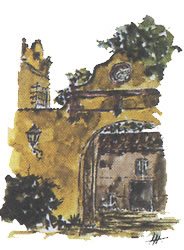EN 17387: 2021. Quantitative non-porous surface test for the evaluation of bactericidal and/or yeasticidal and/or fungicidal activity of chemical disinfectants used in medical area. Test method and requirements without mechanical action (phase 2, step 2).
Test accredited by ENAC (Spanish National Accreditation Entity).
Test with the certificate of Good Laboratory Practices (GLPs).
The EN 17387: 2021 standard describes a surface test method to establish whether or not a chemical disinfectant in the area and the fields described in the scope of application has bactericidal and/or fungicidal or yeasticidal activity on non-porous surfaces without action. mechanics.
The laboratory test simulates practical application conditions. The chosen conditions (contact time, temperature and microorganisms on the surfaces ...) reflect the parameters found in practical situations, including the conditions that can influence the action of disinfectants.
The conditions are intended to cover general purposes and to allow cross-reference between laboratories and product types.
However, for some applications the recommendations for use of a product may differ and therefore additional test conditions may be required.
This document specifies a test method and minimum requirements for the bactericidal and yeasticidal and additionally fungicidal activity of disinfectant chemicals that form a homogeneous and physically stable preparation when diluted with hard water - or in the case of ready-to-use products. use - with water.
This document applies to products used in the medical area for the disinfection of non-porous surfaces without mechanical action.
This document applies to areas and situations where disinfection or antisepsis is medically indicated. These indications are given in patient care, for example: in hospitals, in community medical facilities and in dental institutions; in school, kindergarten and nursing home clinics; And it can occur in the workplace and at home. It can also include services such as laundries and kitchens that supply products directly to patients.
This method excludes the evaluation of the activity of the products against mycobacteria and spores of bacteria.
The product must demonstrate at least a 5 log decimal reduction for bacteria and at least a 4 log decimal reduction for fungi.
Minimum spectrum of test organisms: For bactericidal activity Staphylococcus aureus, Enterococcus hirae, Pseudomonas aeruginosa; For yeasticidal activity: Candida albicans; for fungicidal activity: Aspergillus brasiliensis, Candida albicans. As additional: any relevant test body. Test temperature: according to the manufacturer's recommendation, but between 4°C ± 1°C and 30°C ± 1°C; For tests performed at room temperature, the range will be 20°C ± 2.5°C; Contact time: according to the manufacturer's recommendation, but at least 1 min and at most 5 min. or 60 min (1 min to 5 min at 1 min intervals and 5 min to 60 min at 5 min intervals). Interfering substance: Clean conditions 0.3 g/L bovine albumin; Dirty conditions: 3.0 g/L bovine albumin + 3.0 mL erythrocytes; Additional: Any relevant substance.
In the test, a test suspension of bacteria or fungi in a solution of interfering substances is inoculated onto a test stainless steel surface and dried. A sample of the product under test is applied so that it completely covers the dried test organisms. The surface is kept at the contact temperature and time. At the end of the contact time, the surface is transferred to a previously validated neutralization medium to suppress any activity of the product. The number of surviving test organisms that can be recovered from the surface is determined quantitatively. As a control, the number of bacteria or fungi on a test surface treated with hard water is determined instead of the product under test and the reduction in viable counts attributed to the product is calculated as the difference between the results of the two surfaces tests.



